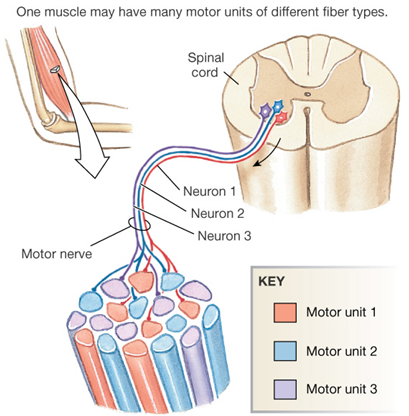No, sorry, this is not a post on how to become a Jedi by increasing your rate of using the Force. Shucks.
The Rate of Force Development (RFD) we're going to talk about is that of muscles and is *kinda* important (read: essential to athletic performance). Today's post will enlighten you as to what RFD is and why one should pay attention to it. Next post will be how to train to increase RFD. So grab something delightful to munch on (preferably something that enhances brain function, like berries.) Caveat: There is a lot of information and other stuff that I’m not putting into this post, sorry, this is just a basic overview of why RFD is important for everyone.
What is RFD?
It is a measurement of how quickly one can reach peak levels of force output. Or to put it another way, it’s the time it takes a muscle(s) to produce maximum amount of force.
For example, a successful shot put throw results when the shot putter can exert the most force, preferably maximal, upon the shot in order to launch it as far as humanly possible. She has a window of less than a second to produce that high force from when she initiates the push to when it's released from her hand. Therefore, it is imperative that the shot putter possess a high rate of force development.

Where does RFD come from?
Well, let me introduce you to a little somethin’ called a motor unit. Motor units (MU) are a motor neuron (the nerve from your brain) and all the muscle fibers it enervates. It can be anywhere from a 1:10 (neuron:fiber) ratio for say eyeball muscles, which have to produce very fine, accurate movements. Or 1:100 ratio of say a quad muscle which produce large, global movements.
There are two main types of MUs: low threshold and high threshold. The low threshold units produce less force per stimulus than the high units. For example, a low unit would be found in the postural muscles as they are always “on” producing low levels of force to maintain posture. A high unit would be in the glutes, to produce enough force to swing a heavy bell or a baseball bat (even though the bat is light, the batter has to move that thing supa fast in order to smack a home run).
Also note the different stimuli required for the different units: small posture adjustments vs. a powerful hip movement. A low stimulus activates low threshold units and a high stimulus activates the high units.
Now, MUs are not exclusively low or high; MUs throughout the body are more like a ladder, low MUS at the bottom, with each successive rung being a higher threshold MU than the one below. And, like a ladder, you can just all of the sudden find yourself at the top of the ladder without having to climb the lower rungs. Unless of course, you’re a cat:
High MUs rarely (if ever) activate without the lower MUs activating first. So, the rate of force development is dependent upon how quickly the lower rungs of the MU ladder can be turned on to reach the highest threshold units (which produce the most force per contraction)… Not only that, but all those units working together produce more force than just the higher ones by themselves, so it's a good thing that the lower ones must activate too. The muscular force produced is the sum of all the motor units.
Why Care About RFD?
Since those higher threshold units won’t be active until the lower ones are on, force production will remain low until the higher ones can get their rears in gear, therefore, going up the MU ladder faster will result in more force produced sooner in any sort of movement.
Let’s take the example of two lifters, A and B. Both are capable of producing enough force to deadlift 400lbs. However, lifter A has a higher RFD than lifter B. Lifter A can produce enough force to get the bar off the ground in about 2 seconds and lock out (complete the lift) in about 3-4 seconds. Lifter B takes 3 seconds to get the bar off the floor and another 5 to get it near his knees. For those who don't know, a deadlift should be roughly 4-5 seconds TOTAL (typically, most people's muscles give out around then if the lift hasn't been completed). B-Man is going to fail the lift before he gets that bar to lock out and will hate deadlifting forever. Bummer.
Or, utilizing a Harry Potter for my analogy for this post, it is analogous to the rate of spell development; how quickly and how powerfully a wizard's spell is performed. In a duel, the faster and more forceful wizard will win. For example, when Professor Snape totally pwns Gilderoy Lockhart:
Hence, if one wants to get stronger, increasing the rate of force development is essential! Moving heavy weights is good (and high RFD helps with that as we saw with Lifters A and B from above); moving heavy weights FAST is even better when it comes to stimulating protein synthesis aka: muscle building. Possessing a high RFD is vital in order to move those bad boys quickly.
Next post, we’ll delve into training methods that can help increase the RFD so you won’t be these guys and skip deadlifting because your rate of force development is less than stellar…

